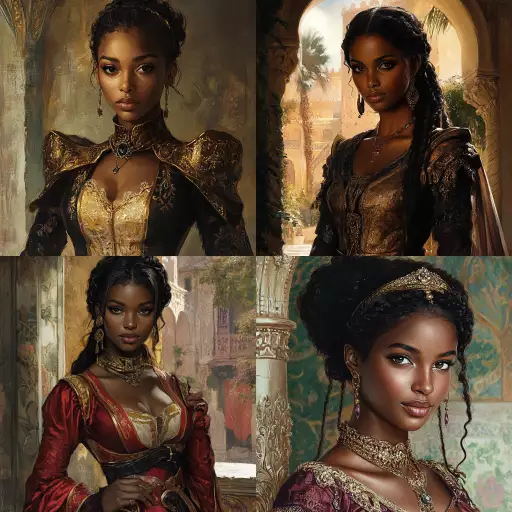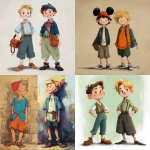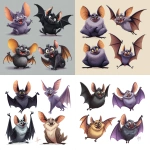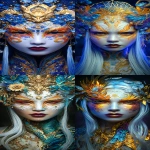Explore the Best AI Image Gallery

AI: The Artists New Palette - Exploring the Impact of AI on Graphic Design
The world of graphic design is undergoing a dramatic transformation, fueled by the rapid advancements in artificial intelligence (AI). From generating stunning visuals to streamlining design processes, AI is becoming an indispensable tool for designers of all levels. This blog post explores the multifaceted impact of AI on graphic design, examining its potential uses, ethical considerations, and future trends.
Revolutionizing Design Processes
One of the most significant impacts of AI in graphic design is its ability to automate repetitive tasks. AI-powered tools can generate basic design elements such as logos, icons, and social media graphics, freeing up designers to focus on more creative and strategic aspects of their work. This increased efficiency allows designers to tackle larger projects and deliver results faster.
- Logo Design: AI algorithms can analyze brand guidelines and generate multiple logo options based on specific criteria such as industry, target audience, and desired aesthetic.
- Image Generation: AI-powered image generators like DALL-E 2 and Midjourney can create unique and imaginative visuals from textual descriptions, expanding the creative possibilities for designers.
- Typography Selection: AI can analyze text content and recommend suitable fonts that enhance readability and visual appeal.
Elevating Creativity and Innovation
While AI can automate tasks, it also empowers designers to push creative boundaries. By providing access to vast datasets and generating novel ideas, AI tools can spark inspiration and lead to innovative designs. Designers can use AI as a brainstorming partner, exploring different concepts and iterating on their work until they achieve the desired outcome.
Ethical Considerations in AI-Driven Design
As with any powerful technology, the integration of AI into graphic design raises ethical considerations that need to be addressed.
- Bias and Representation: AI algorithms are trained on existing data, which may contain biases that reflect societal stereotypes. Its crucial to ensure that AI-generated designs are inclusive and represent diverse perspectives.
- Copyright and Ownership: The question of who owns the copyright for AI-generated designs is still being debated. Clear guidelines and legal frameworks are needed to address this issue.
- Transparency and Accountability: Its important that designers using AI tools are transparent about their processes and acknowledge the role of AI in their work.
Future Trends in AI-Powered Graphic Design
The future of AI in graphic design is brimming with possibilities. As AI technology continues to advance, we can expect:
- Personalized Design Experiences: AI will enable the creation of highly personalized designs tailored to individual user preferences and contexts.
- Real-Time Design Collaboration: AI-powered tools will facilitate seamless collaboration among designers, allowing them to work together in real time on projects.
- Integration with Emerging Technologies: AI will be increasingly integrated with other emerging technologies such as augmented reality (AR) and virtual reality (VR), creating immersive and interactive design experiences.
The integration of AI into graphic design is transforming the creative landscape. By embracing this technology responsibly, designers can unlock new levels of creativity, efficiency, and innovation.






](https://images.ai-img.art/thumbnails/150/269414b0e541026702e9e67c67602c96162f37ff460a388b3b36314c8fc936dd.webp)







](https://images.ai-img.art/thumbnails/150/485c8b1c747827bdc9a962f8a1919b3c259b18dd263b260208a1eae19fb85e07.webp)

](https://images.ai-img.art/thumbnails/150/3020b8c2b6d9be07e042357107af1de10deb274a41d2b0f332684ad4b532a702.webp)

















](https://images.ai-img.art/thumbnails/150/2fbd98ecfc425cfc1597779121e1c0305437067779e9c471eb64ff9615d5be98.webp)




](https://images.ai-img.art/thumbnails/150/8d1fe5a7a49cfc96747182431a853357913286d89258383caab2d3b4681afcb5.webp)









](https://images.ai-img.art/thumbnails/150/5197af8969d850e2a43e141d41e482ccbceedebceb2a4caf9f098f943f9d1b0f.webp)